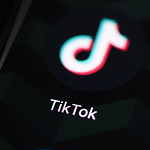
Introduction
People’s lives have changed as a result of the Internet’s increasing presence, and with the sharing economy’s continued growth, job options are no longer restricted to conventional sectors of the economy. Everyone can be a “micro-entrepreneur” in this day and age (John, 2016). Internet freelancers, a byproduct of the times, are becoming more and more common in people’s daily lives. This article will examine the types of work performed by this developing profession in order to assess how it will affect the economic system.

About Internet freelancers
Cyber freelancers are those who operate as independent contractors in the online labor market, typically utilizing online platforms to connect and communicate with clients, and then to deliver and pay after the work is completed (Shevchuk, 2018). They have the freedom to select what and when they work, and they frequently do not have a set location of employment (Shevchuk, 2018), which is why this type of work is so highly valued by today’s young people. The revenue of these online freelancers is typically derived from being paid for completed projects or tasks, but it may also be derived through a share of the platform or other sources (Shevchuk, 2018).
The working form of the “micro-celebrity”
The first criterion for becoming a “micro celebrity” is to amass a large enough fan base. The “micro-celebrities” connect with the audience by doing things like making hilarious videos and sharing their daily lives (Yang, 2022). They will also use current events and difficulties to pique the audience’s interest and share their own lives and experiences with them (Yang, 2022). These actions strengthen the bond between them and their fans (Yang, 2022). This action also opens the way for the necessary conditions to be met in order to make money over the internet in the future.

Reasons why live banding is so popular
For many internet personalities, live bandwagoning is a popular source of income. Web celebrities will agree to collaborate with a brand beforehand and then get compensated for advertising that brand’s items on air. Webcasts, as opposed to traditional television or pre-recorded online videos, are more participatory, allowing viewers to reply and engage in real time (Lu, 2020). This involvement makes it easier for viewers to feel engaged, which enhances their trust and goodwill towards businesses and products (Lu, 2020). According to the poll, the most essential product attribute that the vast majority of buyers evaluate when making a purchasing decision via webcasting is price (Lu, 2020), which is exactly what webcasting can give. Webcasting helps viewers comprehend the advantages and benefits of items by giving more realistic and intuitive product presentations and demonstrations, boosting their propensity to buy (Lu, 2020). Consumers harvested the delight of buying during the live broadcasting process, network anchors received a significant amount of remuneration depending on performance, and the brand also obtained the maximum extent of marketing aims, which is surely a happy situation for all. This economic model provides retailers with a new business approach for gaining more economic value from social media platforms (Geng, 2020). Brands may reach out to young people and Internet users more effectively by working with micro-celebrities, improving brand exposure and sales.

The Tik Tok effect
Tik Tok is the most popular social platform currently, and its high entertainment value has drawn users from all over the world, from the elderly to children, who can be seen on Tik Tok. Nowadays, the makers of Tik Tok are not just “micro-celebrities,” (Yang, 2020) but more and more celebrities with a fan base in all areas of life are now joining this war and desperate to acquire a piece of the pie. These celebrities are not only posting short videos on Tik Tok but are also participating in live streaming to market their wares (Yang, 2020). The fact that this behavior, which was once considered cheap by people at this level, is now being mimicked by celebrities is unquestionably a testament to Tik Tok’s success, and even more so to the fact that the profits behind this type of the “Internet Celebrity Economy” are enormous. Tik Tok’s dynamic environment enables everyone to be an active watcher, creator, producer, or critic (Yang, 2020). Tik Tok can make them feel empowered by allowing them to see that their views are being considered by celebrities in the co-creation process of short video production, which is an entirely new experience (Yang, 2020).
Positive and negative impacts of the Internet on society.
It is clear from study that the Internet enabled online purchasing and contributed to the rapid expansion of online retailing. This has put traditional brick-and-mortar retail stores under competitive pressure, forcing them to find novel techniques to attract customers. As a result of the impact of webcasting, certain practitioners in traditional industries (for example, traditional media, performing arts, retail, and so on) may shift to webcasting or similar fields to adapt to the changing market. At the same time, the Internet gives additional digital marketing channels for businesses to more precisely target potential clients, enhancing marketing efficiency. Numerous employments are created by the webcasting sector itself, including those for hosts, technical support, content production, marketing, and other sectors. Technology for webcasting has influenced an increasing number of people to choose freelancing, particularly self-publishers. They are no longer limited to conventional offline workplaces and can now work from anywhere, including at home. The popularity of remote work has increased as a result of this trend. For creators, the Internet has lessened the obstacles to entrepreneurship and made it simpler for entrepreneurs to enter the market. This has stimulated innovation and the development of new company models, which have produced economic growth.
While the “Internet Celebrity Economy” encourages consumerism and economic growth, it also has significant disadvantages. The “Internet Celebrity Economy” may cause certain “micro-celebrities” to over-market and exaggerate the impact of their products, leading to consumer misinformation (Yang, 2020). On the other hand, the “Internet Celebrity Economy” may lead to certain firms relying too much on the influence of “micro-celebrities” at the expense of the quality of their products and services (Yang, 2020). At the same time, there is a concern that the “Internet Celebrity Economy” will encourage some young people to chase fame and vanity to the exclusion of their studies and families (Yang, 2020). These are the issues that should concern individuals. Platforms must take into account how to control the laws governing live webcasting and provide appropriate instructions.
Conclusion
Although there will be a number of traditional industry staff losses as a result of the Internet, I believe that the overall direction of its development is still more positive than negative. The view for the future is that the developing sector that comes along with the Internet will give people more options in the twenty-first century as artificial intelligence research becomes more and more advanced. Additionally, there are challenges involved in trying to work as an online freelancer because gaining followers depends on producing quality content. Photography, video editing, and social media management are just a few of the specialized abilities needed for webcasting. As a result, individuals may seek out education and training to acquire the skills required for these new work opportunities. Overall, the rise of webcasting has altered how work is done and how jobs are filled, opening up more alternatives while also introducing fresh competitors and challenges. This implies that in order to keep up with the evolving work market, people may need to constantly adapt and acquire new abilities.
References
Geng, R., Wang, S., Chen, X., Song, D., & Yu, J. (2020). Content marketing in e-commerce platforms in the internet celebrity economy. Industrial Management & Data Systems, 120(3), 464–485. https://doi.org/10.1108/imds-05-2019-0270
紅色死神. (2017, April 14). 瑞比 CLBC 直播. Flickr. https://www.flickr.com/photos/deathhell/34952172354/in/photostream/
Lu, C. Y., Marek, M. W., Chen, B. T., & Pai, I. C. (2020). An Exploratory Study on Consumer Purchase Behavior From Live Webcasting E-Commerce. International Journal of Online Marketing, 10(3), 1–20. https://doi.org/10.4018/ijom.2020070101
Pearson, N. (2022, July 7). A watershed moment for estimates of the economic impacts of climate change. Grantham Research Institute on Climate Change and the Environment. https://www.lse.ac.uk/granthaminstitute/news/a-watershed-moment-for-estimates-of-the-economic-impacts-of-climate-change/
ProQuest (Firm) (Ed.). (2016). Sharing Economies. In John, The age of sharing (pp. lviii–lxxvii). Polity.
Radic, I. (2021, April 15). TikTok app icon on smartphone screen. Flickr. https://www.flickr.com/photos/26344495@N05/51204244035
Shevchuk, A., Strebkov, D., & Davis, S. N. (2018). Work value orientations and worker well-being in the new economy. International Journal of Sociology and Social Policy, 38(9/10), 736–753. https://doi.org/10.1108/ijssp-01-2018-0006
Yang, P. (2022). Tik Tok and Microcelebrities: An Analysis of the Impact of Short Video Apps on Chinese Culture and Communication. China Media Research, 18(1), 23–.
(2014). Wikimedia.org. https://upload.wikimedia.org/wikipedia/commons/8/8a/Freelancer_Making_Money.jpg

